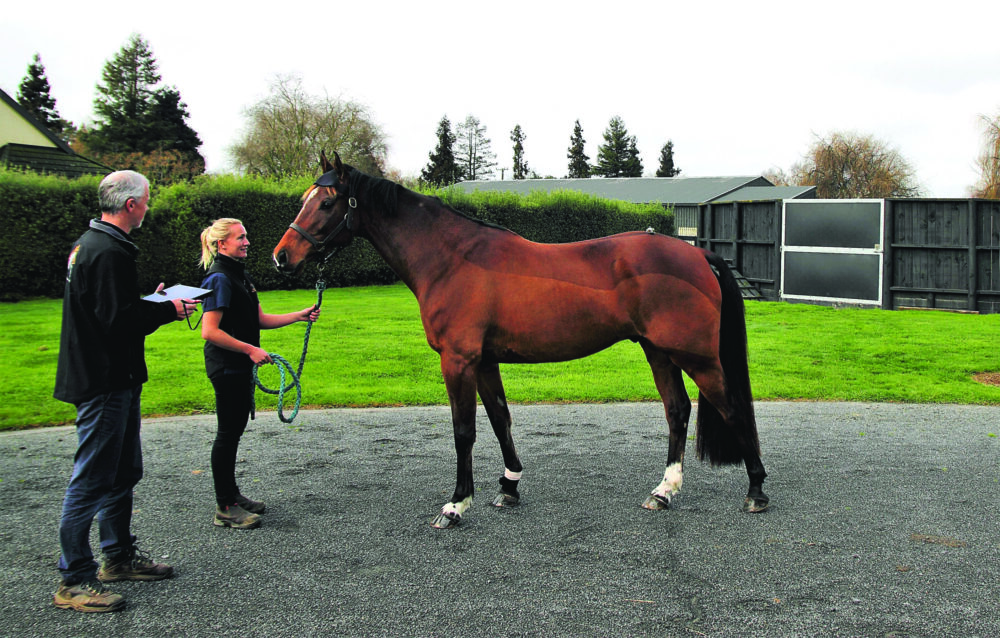
What can I expect during an objective lameness evaluation for my horse?
An objective evaluation with an Equinosis Q is very similar to the subjective evaluations you know today. This is by design. The Q was developed specifically to complement a skilled veterinarian’s examination. The Q uses inertial sensors to measure lameness. This is an additional tool your veterinarian will have to quantify what the eye is perceiving. You can think of it as your veterinarian performing the qualitative part of the examination, while the Q provides the quantitative part of the examination. The lameness metrics calculated in the analysis report asymmetric head and pelvic movement, to the millimeter, which correlates to decreased weight-bearing on the limbs.
Sensor placement of three body-mounted wireless sensors attach to the horse’s head, pelvis, and right forelimb. Instrumentation takes about 60 seconds. Sensors weigh about an ounce and have no effect on lameness measurement. Sensor data is transferred wirelessly to the data analysis program on your veterinarian’s tablet in real time. Analysis takes less than 10 seconds.
Your veterinarian may watch your horse walk, trot and canter during a lameness evaluation; however, the Q is designed to be used only at the trot, which is the most sensitive gait to detect lameness. So, your veterinarian will collect and evaluate data while your horse is trotting in a straight line. The Q can also be used for lunging evaluations, flexion & manipulation tests, and even ridden evaluations.
Following baseline measurement, your veterinarian will evaluate your horse more closely, for instance with hoof testers and palpation, etc. While pain is the most common cause of lameness, other things can cause lameness – including non-painful mechanical or anatomical abnormalities, neurologic disease, and, in the case of multiple limb lameness, compensatory mechanisms to off-weight a primarily lame limb. Following a careful inspection of your horse, the veterinarian will then likely pursue diagnostic blocks to localize the lameness. It is important to understand that the source of the lameness within the limb cannot be identified with the Q alone. Your veterinarian must localize the lameness and then make a diagnosis – often with imaging like X-rays or ultrasound. The importance of utilizing objective measurement in the assessment of diagnostic blocks cannot be understated. An objective confirmation of change, or, as importantly, lack of change, prevents bias in the subjective evaluation.
So, the evaluation process will look very familiar. Though, there may be a few extra steps in the process, such as repeating a trial to confirm that a lameness is stable, or to confirm change after a block. These steps reduce variability that is common in horses and provides the most accurate view of the horse’s movement pattern.
Using precise measurements of your horse’s lameness, your veterinarian can get to the source of the issue quicker, with more confidence, and with a repeatable measurement system to monitor therapy. Expect a qualified objective measurement to provide increased accuracy and assurance in your horse’s care.

